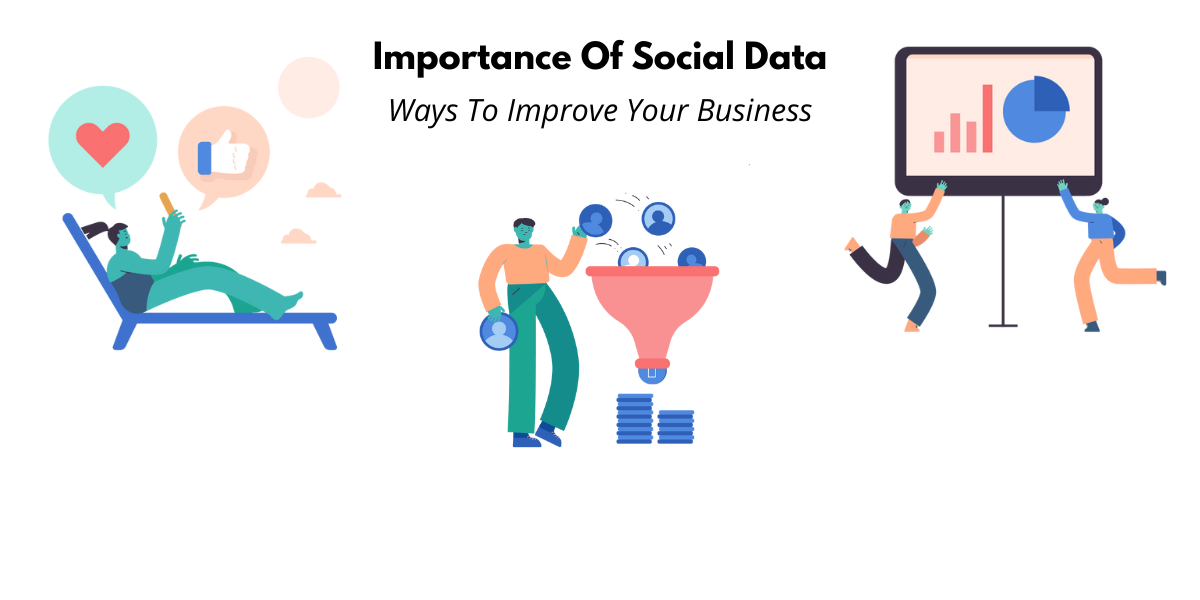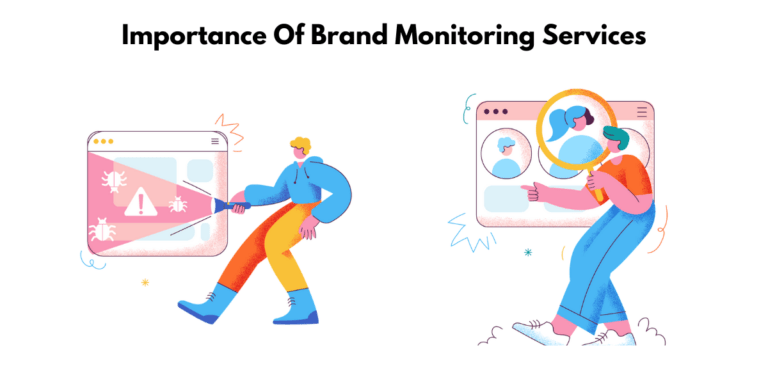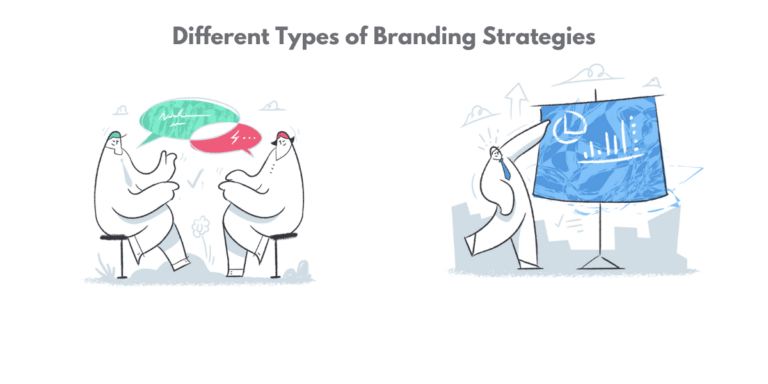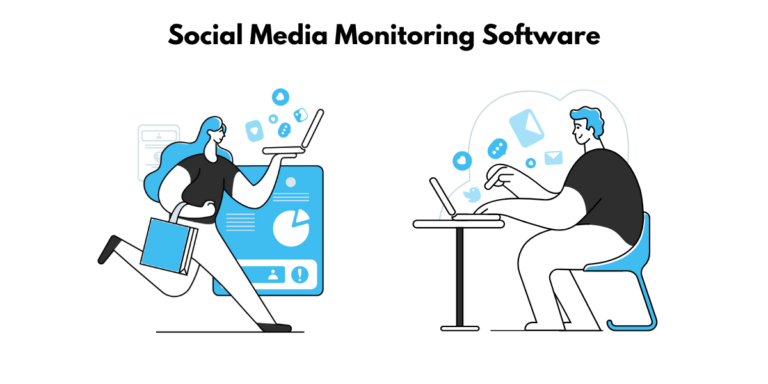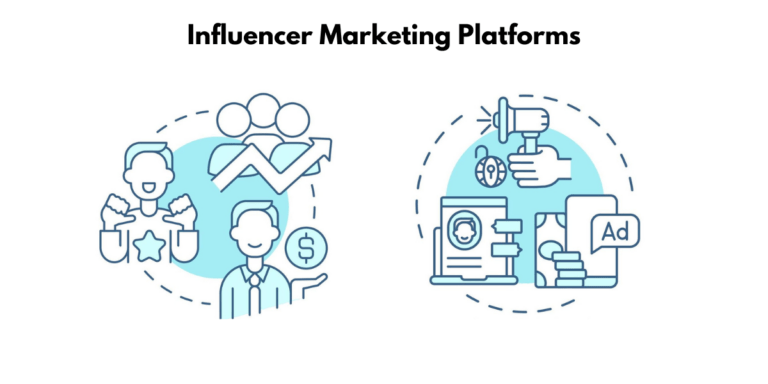Social Data: What is Its Value and How to Use It to Drive Better Business Outcome
How to Use Social Data to Drive Better Business Outcome
Social data is one of the businesses’ most valuable information sources. It can provide deep insights into your target audience and how they engage with your company. Additionally, social media data can help you track your brand’s reputation and measure the social impact of your marketing campaigns.
Undoubtedly, social media is a powerful tool businesses can use to drive better outcomes. However, to maximize its potential, businesses need to understand how social media ties into their overall ROI and how it can be integrated with other systems. By doing so, they can ensure they are getting the most out of their social media campaigns.
What is social data?
Social data is any data that can be used for social media marketing and public relations. This can include customer feedback, website analytics, blog comments, and even Twitter followers. Social media has become an important part of how businesses operate, and social data is one of the most valuable resources a business can have.
Social data can also help security applications determine if a facility has physical threats. For example, if someone posts a picture of a building with a comment about wanting to harm, security personnel may be alerted to investigate further.
Finally, social data refers to collecting social media information to inform threat detection. This means collecting all available information from various social media channels to understand potential threats better. Chans and other fringe social networks are prime sources of social data for organizations, as they tend to act quickly, with little or no warning.
Simply put, social data is any information found on social media platforms and websites. However, the term is often used to refer specifically to the kind of data accessible through public posts and profiles. Google still considers websites like Facebook and Twitter as the primary social data sources. Still, this definition is gradually changing as more people move to private messaging and other alternative platforms. In fact, including deep and dark websites in your analysis can help security professionals better understand online social activities and minimize the gaps in their knowledge.
Why is social data analysis important?
Social media has taken over the world and is now an important part of our 3lives. We use it to stay connected with friends and family, follow our favorite celebrities, and learn about new products and services;.,b. It’s also a powerful tool for businesses.
Social data is the digital footprint created by social media users. This data includes posts to likes on Instagram or followers on Facebook. Social data has a powerful influence, but it’s not always easy to analyze. However, great tools can help you dig into your analytics for customer experience and identify patterns, trends, and opportunities in social network data.
Unsolicited feedback from social media platforms is a valuable data source for companies. Text analysis helps you understand, process, and sort social media conversations for polarity (negative to positive sentiment), topic, urgency, intent, and more. This information can help brands monitor conversations in real time and automate customer care tasks so they respond quickly.
What are local data and social data?

Local data is information that is stored on a particular device. For example, the contacts list on your phone is local data. Social data is information that is shared with other people. For example, the posts you share on Facebook are social data.
Is social media structured data?
There is no consensus on what social data is. However, it can generally be described as any kind of information produced by the user to share on social media publicly. This includes posts, tweets, comments, photos, and videos. Social media platforms like Facebook and Twitter are structured data sources because they allow users to input specific types of content into designated fields (e.g., title, description, tags). However, not all social media platforms are structured data sources. For example, Mastodon and Telegram are decentralized social networks that don’t have specific input fields for users to fill out. This makes it difficult for marketers to figure out how many people follow a specific Instagram influencer or listen to a playlist on Spotify.
How is social data aggregated?
When it comes to social media, there are a few things you need to define before proceeding: what is social media? What is the difference between public and private social media? And why does this distinction matter when it comes to professional environments?
Social media has become an important part of our lives- we use it for personal communication, news consumption, and more. However, because it is such a broad term, it’s important to understand the different types of social media. Public social media is open for anyone to view and includes platforms like Twitter and Facebook. Private social media is only accessible by people permitted by the owner of the account, such as LinkedIn or Instagram.
Now that we know the difference between these two types of social media, it’s important to ask: does the distinction between public and private matter when it comes to professional environments? The answer is yes. Public social media can be used in a professional setting, but you must be careful about your data sharing. Remember that anyone, including your boss or potential clients, can see anything posted on a public platform.
Social network data has become increasingly important for companies and organizations. It can track customer sentiment, understand how people are talking about your brand, and more. But social network data isn’t just useful for businesses- it can also be used for detecting physical security threats like natural disasters and shootings.
Mainstream social media platforms like Facebook and Twitter have a large user base, making them a valuable source of data. But it’s important to remember that not all social media platforms are created equal- some have more sensitive data than others. When using social network data in a professional setting, understand the difference between public and private platforms.
In the past, social data was mainly collected from established social media sites like Facebook and Twitter. However, in this day and age, social media is no longer limited to those platforms. Various sources can be used to aggregate social data, including but not limited to online forums, review sites, chat rooms, and blogs. Furthermore, context is important for understanding the meaning of social data. For example, if someone posts a tweet about an upcoming protest, it would be important to know where the protest is taking place and what time it starts.
Which apps use social data?
Many different apps use social data. A few examples include:
- Facebook – Facebook allows businesses to target their ads based on user data.
- Instagram – Instagram offers valuable visual insights that allow users to see what they’re sharing and where it’s going.
- Twitter lets businesses target ads using demographic information like location, age, gender, and interests.
- LinkedIn Ads – LinkedIn Ads allow businesses to target their ads by job title, company size, or other factors.
Practical applications for social data

Social data is a type of data that is collected from social media platforms. It can be used for various purposes, including customer experience social media management, and business intelligence. The next step is to augment social data with other public data for more advanced analytics. Advanced analytics can track and predict future performance from a wide range of data. Data is public, curated, and user-generated.
In practical terms, social data can be used to drive better business outcomes when it is contextualized and enriched with insights. Enterprises need to provide a system that makes social data easily accessible and exports it into business applications. Doing so will allow businesses to gain insights into the current state of a topic and track the trend over time.
Campaign analysis
With social media becoming an increasingly important part of most advertising campaigns, it is important to analyze their data. Social data is gaining popularity due to its ability to track reach, impressions, engagement, and sentiment. However, this data will not tell who the people who saw a campaign are or what they thought of it.
To better understand how well a campaign performed, you need to look at other data sources such as website visits or purchase intent language in social media posts. Combining these various techniques will make social media reports more interesting and insightful.
Product analysis and development
Product analysis and development are an important part of a company’s success. Listening to unsolicited feedback is a great way to begin product development market research, which is much faster than traditional methods. Sentiment analysis is a nuanced task that requires unique context and perspective. “Sentiment Rulesets” are new tools that help people get the most accurate understanding of how their audience feels. “Sentiment Reclassification” helps you customize your analysis to understand better what is happening in your tweets, Facebook posts, and other social media content.
This guide shows some practical methods of using social data. In the example above, “World Development Indicators” is a source of social data and can be used to find other sources. The WDI database is updated quarterly and features the most current, accurate global development data. The GDF publication has been renamed International Debt Statistics (IDS) and continues to have a separate database; it includes health statistics, external debt, financial flows, gender, and the economy. The dataset was last updated on May 25th, 2022; it has likely been updated since then. A new study from LinkedIn highlights the importance of social data for recruiting, sales, marketing, and IT decision-making.
Social selling
Social media is a great way to connect with customers and learn more about them. It can also help optimize marketing efforts, retail interactions, and sales. Social data can lead to opportunities for selling directly to customers or competitors.
Trending topics
Social media is a great way to stay connected with your audience and understand their changing wants, needs, and interests. To tap into this wealth of information, you need to use social intelligence tools with advanced features that surface better insights faster. Brandwatch Signals and Audiences can surface trending topics within a dataset you define through a choice of search operators. This helps you get insights into which topics have the most potential for your brand or industry. Additionally, it shows your audience’s interest in various topics so you can use them to target specific audiences more effectively. Sprout’s Listening solution can be used to identify important trends and insights for your business. The listening solution is flexible in that it can work with any platform or marketing channel – you’re not limited by what data you have access to.
Pricing conversations
Customers who are unhappy with pricing often take to social media to express their dissatisfaction. This can be helpful for companies who want to keep track of when and where people are complaining about prices. Additionally, social data gives brands a more holistic view of the conversation around their product categories and specific products.
Social media is analyzed further, categorizing conversations by sentiment, demographics, and more. For example, looking at the sentiment, you can see whether people are generally happy or unhappy with your product’s price point. This information is important to track so that you can make changes accordingly.
Feedback is a great way to learn more about your products and consumers. It allows you to gain valuable insight that wouldn’t be possible otherwise – like what people like and dislike about your prices. Social media allows customers to communicate directly with brands, so companies need to pay attention!
Pricing conversations
One of the many benefits of social data is that it can help you identify conversations about your product and its features. For example, if you’re looking to launch a new product, social data can help surface feedback on pricing before the product even hits the market.
In this case, we looked at tweets from people who mentioned either “discount” or “sale” between January 1st and March 31st, 2017. We then categorized these tweets by sentiment (positive, negative, or neutral), demographic information (location, gender), and whether the conversation was about a brand or not.
The results show that while discounts are generally seen as a positive thing by consumers, there is some dissatisfaction with how brands offer discounts. For instance, when brands offer discounts that aren’t very appealing to consumers or when they undercut prices for too long.
Influencer discovery
There are many benefits to working with influencers. Not only do they have the ability to help spread your message further, but they can also do so without having to pay for adverts.
To find influencers, you can search for conversations about your brand or product category on social media sites like Twitter, Facebook, and Instagram. This will give you a good idea of who is talking about your products and how influential they are.
You can also search for a list of influential Twitter accounts by entering specific terms into the site’s live database. The database has over 200 million active profiles, giving you plenty of options for finding the right people to work with.
Recruitment using social data
The job application process is moving from paper resumes delivered by hand to a digital health collection of online experiences. Social media has changed how people search for jobs and employers find potential employees.
Social intelligence tools like Brandwatch Audiences can help companies discover more candidates. Employers can use social data to recruit new staff and encourage referrals. Social media marketing allows companies to measure consumers’ user journeys, enabling them to control the flow of customers further down the line.
Social data can be used for analysis, business intelligence, and customer experience management. Social listening capabilities provide the key profile information of customers, prospects, or employees. This helps identify qualified leads or future employees in an organization that already have a relationship with your company on social media platforms such as LinkedIn or Twitter.
Social data can be used to harvest big data analysis results and cx management practices that would otherwise go unnoticed without it. By understanding how meaningful insight is generated, we can understand their value better when it comes time to make decisions about integrating this type of data into our business processes.
Social media research
Social media research can often yield actionable insights that don’t fall neatly into one category. For example, Jean Burgess and Axel Bruns use the term “Social BSD” to refer to social network data because it is focused on humanities and social data science. Social or cultural data has the potential of being brought into humanities, which is seen as a positive by some people in society.
Meanwhile, social network data has shifted towards media, communication, and computational social science. The BSD concept was introduced to help understand Big Data with social network data. Big Social Data refers specifically to social data that is of a large scale or significant importance.
This research is based on the idea of “BSD” or “Big Social Data,” which includes social media content. The authors identify ethical and technical challenges in analyzing this data, including authenticity and reliability. As such, Big Data has practical applications by social scientists for research – like connecting the academy with society at large – but also for other areas such as business intelligence or market analysis.
Buyer personas
Developing buyer personas is a process of combining data from other sources with information about your customer. This helps create a more accurate representation of your customers.
Determining what content your audience is reading and sharing, as well as their interests, profession, and location, can give you an idea of what to produce next. It also allows you to understand better what content resonates with them and how they interact.
Brands can use social media to understand their audience better and get ahead of the competition. Additionally, brand managers can use social media listening tools like Brandwatch or subscribe to shareable bulletins like Share This Post to gain insights that they might not be able to find through other means.
The term “Consumer Research” was coined by J Walter Thompson in 1944 when they were trying to come up with a way to describe the new techniques that were emerging at the time, which used social network data. These techniques have become more prevalent in recent years as our understanding of social media has grown.
Which social data sources should you measure?

Social network data is one of the most important data sources for businesses today. By monitoring and measuring various social media channels, businesses can better understand how their brand is doing and what content consumers are engaging with. Additionally, social media data can help businesses target consumers more effectively with relevant content. There are a variety of different social data analytics that businesses should measure to gain a comprehensive understanding of consumer behavior online. These sources include digital marketing, search engines, blogs, and social channels.
As social media platforms evolve, so does the data they offer. The matrix below includes some of the most popular social sources: Facebook, Twitter, Instagram, and LinkedIn. This guide will provide a brief overview of Reddit, which is often overlooked as a social networking data source. Then we will cover which data sources you should measure from Reddit and how to do so.
Facebook is the most popular social media platform in the world. It has more than 2 billion active users and continues to grow. Recently, Facebook has added community-focused features, including more groups and ads for Super Bowl 2019. This provides brands with new opportunities to connect with customers on the platform. However, excluding China from your social listening misses out on potentially valuable insights into the region and how Chinese consumers engage with brands, celebrities, and each other.
Twitter is a social media platform where users share thoughts and ideas in 140 characters or less. It’s also a great place to monitor your brand, products, and campaigns. For the best monitoring, you need the Twitter Firehose. With it, you can track mentions of your brand name or products in real time.
You can also use queries to monitor your engagement levels for new campaigns and compare them with past benchmarks. Share of voice is a measurement tool for social media marketing campaigns and how they compare with the rest of the industry. To track your social channels, the share of voice, and content performance, use tools like Sprout Social or Raven Tools.
US Twitter users are generally more educated than the average US population; there’s a median age of 40 on US Twitter. Brands often react to major news within minutes of it happening. So if you’re looking to stay ahead of the curve, keep an eye on what’s happening on Twitter first!
Channels like Twitter make it perfect for customer support and marketing initiatives because they offer transparency into what people are saying about your brand complaints account for only 3% of all tweets mentioning brands*. The potential upside is increased customer satisfaction and a lower risk of damaging the business reputation from negative sentiment.
*Source: Forrester Research, Inc. “Twitter Conversation: The State of the Social Customer Relationship” (2013)
TikTok
TikTok, formerly known as Musical.ly, is a rapidly growing social media app popular with younger generations. In 2019, TikTok was the 4th most downloaded app in America.
TikTok is unique in that it allows users to share short videos of themselves singing or dancing. Users can also create challenges for others to participate in.
Blackpink’s “Awesome Phone Song” music video has been viewed over 1 billion times on YouTube. However, the band’s success on TikTok has been even more impressive. Their “Ddu-Du Ddu-Du” challenge video has been viewed over 440 million times on the app.
If you’re looking to boost engagement on your social media accounts, you should consider integrating TikTok into your strategy. You should assess what could work for your brand and find opportunities with users already engaging with your product.
Instagram is one of the fastest-growing social media channels. It’s a great place to share photos and videos and is especially popular with millennials.
Influencers charge big money for their posts, but you can have great engagement with less reach and more quality. For example, “A post shared by Brittney (@brittneydeyoung) on December 17th, 2019 at 7:40 am PST” had an engagement rate of 3.
Some social media sources, such as Instagram, do not need a large audience to achieve great results. Most people are on Instagram, which is why it’s the most popular social network in North America and Europe. With just 4% of the population using Instagram, it is the best social platform for influencers looking to engage with their followers.
LinkedIn is the world’s largest professional network. With 675+ million members, it’s a great fit for companies looking to advertise their B2B brand. LinkedIn offers businesses several ways to target potential customers, including:
Businesses can define demographics based on business roles, such as employee or customer, to effectively target content.
All topics are included in this list. This is a very broad topic, with many sub-topics covered. Each sub-topic has been numbered for easy reference to social network data usage.
There are different types of social data sources that you should measure, and LinkedIn is one of them! The list includes dia, Scheduling, Social Media Strategy, Social Media Trends, Social Spotlight, Team Collaboration Video, All Sprout, and Sprout in Action Team.
Sina Weibo
Sina Weibo is a quick engagement platform that can help brands monitor conversations happening about their product. This can help them understand their product in greater detail and identify any sentiment issues early on. Additionally, sentiment helps identify brand saturation throughout a focused community on Sina Weibo, indicating that it’s time for a shift in strategy or messaging.
YouTube
YouTube is a video-sharing website where users can upload, view, and share videos. It offers various interests, from videos to live stream and TV series. In 2019, YouTube Rewind recapped the best content uploaded on YouTube.
Social data can help you identify which audiences are most interested in your industry. For example, if you sell clothes online, you might want to measure data from social media platforms like YouTube, Facebook, Instagram, and Twitter. This will help you find relevant content for your audience and build a community around it.
All Topics would be a good idea to measure to pinpoint trends across all industries. However, some sources may be more reliable when identifying trends specific to your market or niche. “Dia” refers to all types of social media scheduling software. At the same time, “Sprout Social” is just one type of that software. Suppose you’re looking for detailed insights into how users interact with your website (including which social media platforms they use). In that case, Sprout Social’s “Sprout In Action” product might be a valuable resource for you.
How to track social media data for marketing
Collecting and using social media data is one of the most effective ways to improve your marketing. By having a unified view of all your data, you can more easily track how well your campaigns are doing and make adjustments as needed. Additionally, social network data can help you learn more about your audience – what they like when they want to see content, and where they spend their time online. This information can help you target them with future campaigns and improve your overall business outcomes.
Social data mining provides plenty of valuable insights into the thoughts and preferences of an audience. When it comes to marketing, this data should be gathered and analyzed to help improve business outcomes. Things that can be tracked include clickthrough rates, shares, and engagement levels for social media content and social interaction. Additionally, a free template is available that can help you capture your social media performance metrics in a visual way that is easy to present to stakeholders.
Gather data with a social media data analytics tool
Collecting data is an important part of any business, and social media data analytics tools make it easy to gather information from various sources.
Social media data analysis is a tool that can help determine how the public feels about your brand or product. It can also save employee hours and provide more accurate results. Gathering social data proactively will help you stay ahead of trends in the industry and ensure that your marketing efforts are reaching the right people. Social media marketing goes hand in hand with good data collection practices using the right tools makes it easy!
Record your findings
When tracking social network data, it’s important to record your findings in a template. This will help you compare the results of your efforts against the goals set by you and your company. Additionally, it will make it easier for you to track progress and identify areas that need improvement.
Share the results in a social media report
To use your social media data for marketing, you can compile it into an easy-to-digest format by analyzing programs or manually creating a professional presentation of it.
You can collect clicks, shares, comments, and more to track engagement. Reach is vital to social media marketing efforts as it helps establish your brand’s online reach. Engagement is a key metric that should be tracked with raw data like impressions and visits to profiles of people who follow you on social media.
The different components of the social media strategy are marketing goals, data about your brand’s social media activity, and social analytics. The goal is to ensure you’re tracking the right types of social content for marketing to maximize return on investment (ROI).
Tips for smart social media data collection

Collecting social network data can be a daunting task, but it is important to do to make informed business decisions. You need a tool that gives you raw data and statistical insights so you can see what is working and what isn’t. Once you have collected a lot of data, you can make more confident business decisions and improve other departments’ processes. Oktopost enables social media marketers to track clicks, leads, and revenue from various social media activities. The data collected with Oktopost can be integrated with marketing automation and CRM platforms to help increase ROI.
To use social data effectively, you must collect and integrate the data across all of your channels. This will help you provide a more engaging experience for your customers and give you access to valuable customer insights. Additionally, integrating social media with other departments in your company (like customer service) can help improve the overall customer experience.
Know your goals and KPIs
Without goals, social data is less useful. You need to identify a few key business indicators to understand the big picture of your social media efforts. This includes understanding what’s working and what isn’t.
Track platform-specific social data
When it comes to social data, there’s a lot of it out there. You can collect data on various platforms such as Twitter, Facebook, and Linked In. However, you need to decide which platform-specific social data you want to track to measure your progress towards your goals.
Some important data points you may want to consider tracking include engagement (likes, shares, comments), reach (number of people who saw your post), impressions (total number of times your post was seen), and video views. Measuring these metrics will help show you how well your social media strategy is working.
Set up a social listening program
This type of data is helpful for businesses in various ways, including understanding customer behavior, predicting demand, and revealing promotions and launches from competitors.
Text-based social data mining can be used to predict morning traffic patterns and gain insights into the mental health of college students.
Overall, social media monitoring provides valuable information about online communities that marketers may not have access to otherwise. Most companies who use social listening find that its value continues to increase over time.
Ensure you comply with the rules
When collecting social network data, it’s important to know the rules and regulations surrounding data privacy. The Facebook Pixel is a great way to collect conversions and behavior metrics on social media sites, but it’s not the only option available to social media managers. Other tools like Google Analytics can also provide valuable insights into how people interact with your website.
Be sure to include a disclosure on your website about how you use cookies and share data collected through them. This will help ensure that visitors know how their data is being used and that they can make an informed decision about whether or not to interact with you online.
Social network data can be extremely valuable for businesses looking to maximize their social presence. Businesses can create more effective social selling strategies by analyzing which content resonates with audiences and identifying key influencers. Additionally, customer service should be optimized for selling opportunities. Many buyers start their purchasing process by engaging with brands on social media channels.
Focus on personalization (but not too much)
Regarding social network data, it’s important to focus on personalization. However, you don’t want to go too far and target potential customers. Finding the most relevant content on social media can be difficult when you’re collecting too much information about your users.
It’s important to know how to use data for personalization. Personalizations should be based on up to three customer data dimensions, and the ad should be helpful or not creepy. Remember what kind of customer you’re targeting when personalizing messages – make sure your social media strategy is in line with the customer’s needs!
Social media analytics can be done in one centralized dashboard, making it easy to see at a glance what is working and where to improve performance. This way, you can ensure that your social media efforts provide value for your customers.
